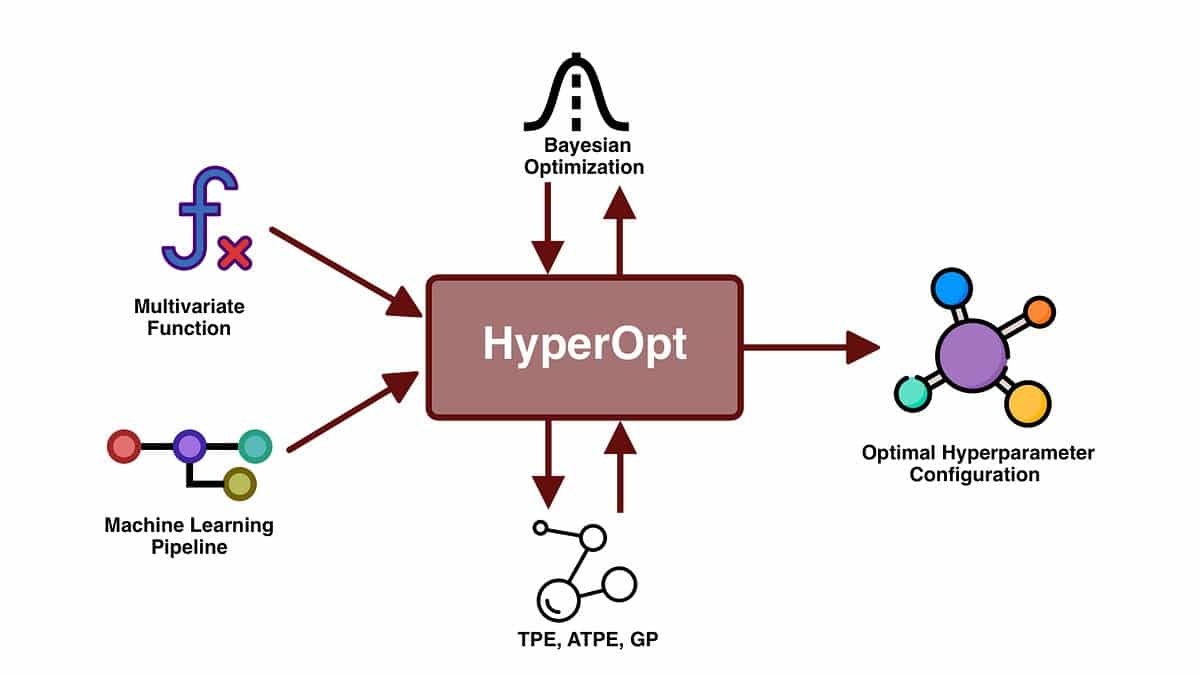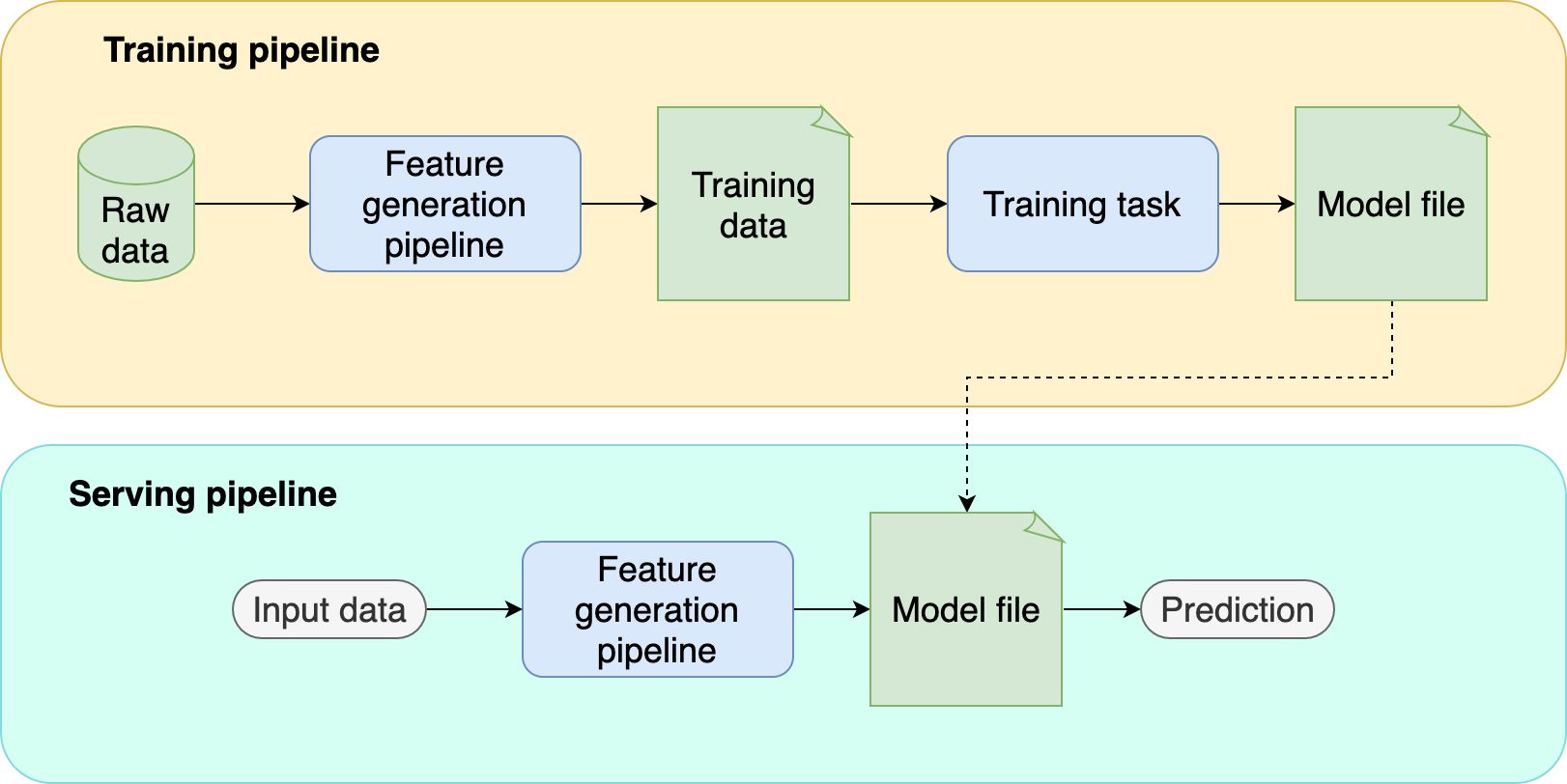Introduction
Welcome to the world of machine learning, where data and algorithms drive powerful insights and predictions. As the field continues to evolve and expand, it becomes crucial for individuals and organizations to stay ahead of the curve and leverage the best techniques and methods available.
One such technique that has gained immense popularity in machine learning is called Grid Search. Grid Search is a method used to optimize the performance of machine learning models by systematically searching through a specified parameter grid and determining the best combination of hyperparameters.
In this article, we will explore the concept of Grid Search in machine learning, its relevance, and how it can be implemented to improve the performance of your models. Whether you are a beginner getting started with machine learning or an experienced practitioner looking to fine-tune your models, this article will provide you with the insights and knowledge you need.
Before diving into the specifics, let’s consider why Grid Search is necessary and how it can benefit our machine learning endeavors.
What is Grid Search?
Grid Search, also known as hyperparameter tuning, is a technique used in machine learning to find the best combination of hyperparameters for a given model. Hyperparameters are variables that are not learned directly from the training data but are set by the user before the learning process begins. They influence the behavior and performance of the model.
The Grid Search algorithm exhaustively searches through a predefined hyperparameter grid and evaluates the model’s performance for each combination of hyperparameters. By systematically exploring different parameter values, Grid Search helps identify the optimal set of hyperparameters that yield the highest accuracy or the lowest error metric.
The name “Grid Search” comes from the approach of creating a grid or a table where each row represents one combination of hyperparameters. Each column in the grid corresponds to a specific hyperparameter, and the intersection of a row and column represents the value of that hyperparameter. The algorithm then evaluates the model’s performance for each cell in the grid and selects the combination with the best performance.
Grid Search is considered an essential approach in machine learning because it automates the process of hyperparameter tuning, which can be time-consuming and complex if done manually. Instead of guessing the optimal hyperparameters or relying on trial and error, Grid Search provides an organized and systematic approach to finding the best parameter values, saving both time and effort.
Furthermore, Grid Search is a versatile technique that can be applied to various types of machine learning algorithms, including linear regression, support vector machines, random forests, and neural networks. It is not specific to any particular algorithm, making it a valuable tool in the machine learning toolkit.
Why use Grid Search in Machine Learning?
Machine learning models are heavily dependent on hyperparameters to achieve optimal performance. However, selecting the best values for these hyperparameters can be challenging as there is no one-size-fits-all solution. This is where Grid Search comes into play, offering several benefits in the machine learning workflow:
1. Optimization of Model Performance: Grid Search allows us to systematically explore different combinations of hyperparameters, enabling us to find the optimal configuration that yields the best model performance. By tuning the hyperparameters, we can improve accuracy, reduce error, or optimize any other relevant performance metric.
2. Time and Resource Efficiency: Manually searching for the optimal hyperparameters can be time-consuming and resource-intensive. Grid Search automates this process by systematically evaluating all combinations in the hyperparameter grid, saving valuable time and effort. Moreover, it allows us to leverage parallel computing to speed up the search process even further.
3. Reproducibility and Consistency: With Grid Search, we can ensure that every time we run our model, we use the same hyperparameter values. This makes our experiments more reproducible and consistent, allowing us to compare and evaluate different models accurately.
4. Insights into Hyperparameter Interactions: Grid Search provides us with insights into the interactions between different hyperparameters. By observing how changing the value of one hyperparameter affects the model performance for different values of another hyperparameter, we can gain a deeper understanding of the underlying mechanisms and relationships within our model.
5. Scalability across Algorithms: Grid Search is not limited to a specific machine learning algorithm; it can be applied to various algorithms. This scalability allows us to explore and optimize hyperparameters for different models, ensuring that we achieve the best performance regardless of the algorithm we are using.
By leveraging the power of Grid Search, we can significantly enhance the performance and efficiency of our machine learning models, leading to more accurate predictions and better decision-making. Let’s dive into the workings of the Grid Search algorithm in the next section.
How does Grid Search work?
Grid Search operates by exhaustively searching through a predefined hyperparameter grid and evaluating the model’s performance for each combination of hyperparameters. To understand how it works, let’s break down the steps involved in the Grid Search algorithm:
1. Define the Hyperparameter Grid: The first step in using Grid Search is to define the hyperparameter grid. This involves specifying the hyperparameters and their corresponding values that you want to explore. For example, if we are using a support vector machine, we might define a hyperparameter grid with the values of the kernel function, penalty parameter, and gamma values.
2. Create the Parameter Grid: Once the hyperparameter grid is defined, Grid Search generates a parameter grid by creating all possible combinations of the hyperparameter values. This creates a matrix-like structure where each row represents a unique combination of hyperparameters.
3. Model Training and Evaluation: With the parameter grid in place, Grid Search proceeds to train and evaluate a separate instance of the model using each set of hyperparameters. The model is trained on the training data, and its performance is evaluated using a specified evaluation metric, such as accuracy or error rate. This evaluation is typically done using cross-validation to ensure robustness and avoid overfitting.
4. Select the Best Model: After evaluating all combinations of hyperparameters, Grid Search identifies the model that performs the best based on the evaluation metric. This could be the model with the highest accuracy, the lowest error rate, or any other performance measure specified by the user.
5. Fine-tuning and Iteration: Grid Search allows you to further refine the chosen model by narrowing down the hyperparameter values around the best-performing combination. This is done by defining a smaller range of values around the optimal values and repeating the process. It can be seen as a way to zoom in on the most promising hyperparameter values for enhanced performance.
By systematically exploring different combinations of hyperparameters, Grid Search helps identify the optimal configuration that maximizes the model’s performance. This iterative process saves time and effort compared to manual tuning and provides a structured approach to hyperparameter optimization.
Now that we have a clear understanding of how Grid Search works, let’s move on to implementing it in Python and evaluating the results.
Implementing Grid Search in Python
Implementing Grid Search in Python is relatively straightforward, thanks to the widely-used machine learning libraries such as scikit-learn. Let’s explore the steps involved in implementing Grid Search using scikit-learn:
1. Import the Required Libraries: Begin by importing the necessary libraries, including the machine learning algorithm you want to use, the GridSearchCV class from scikit-learn, and any other relevant libraries for data preprocessing and evaluation.
2. Define the Hyperparameter Grid: Specify the hyperparameters you want to explore along with their respective values using a dictionary format. For example, if we are using a support vector machine, we might define the hyperparameter grid as a dictionary with keys representing hyperparameters like kernel, C, and gamma, and values as lists of possible parameter values.
3. Create the Grid Search Model: Instantiate the GridSearchCV class with the machine learning algorithm you are using and the defined hyperparameter grid. Specify the evaluation metric to optimize, the number of cross-validation folds, and any other relevant parameters.
4. Fit the Grid Search Model: Train the Grid Search model by calling the `fit` method and passing the training data and labels. This will execute the Grid Search algorithm, systematically evaluating each combination of hyperparameters and selecting the best-performing model.
5. Access the Best Model and Hyperparameters: After the Grid Search algorithm completes, you can access the best-performing model by calling the `best_estimator_` attribute of the GridSearchCV object. You can also access the optimal hyperparameters using the `best_params_` attribute.
6. Evaluate the Model Performance: Finally, you can evaluate the performance of the best model on unseen data by using the testing dataset. This will give you an estimate of how the model will perform in real-world scenarios.
By following these steps, you can efficiently implement Grid Search in Python and explore different combinations of hyperparameters to find the best configuration for your machine learning model.
Next, let’s explore the process of evaluating the results obtained from Grid Search.
Evaluating the Grid Search results
Once the Grid Search algorithm has finished searching through the parameter grid and identified the best combination of hyperparameters, it is essential to evaluate the results to assess the performance and make informed decisions. Here are some key aspects to consider when evaluating the Grid Search results:
1. Best Model Performance: Look at the performance metrics of the best-performing model, such as accuracy, precision, recall, or F1 score, depending on the problem at hand. These metrics provide insights into how well the model performs on unseen data and can guide you in choosing the optimal configuration.
2. Comparison with Baseline: Compare the performance of the best model obtained from Grid Search with the performance of a baseline model or other models that were not tuned using Grid Search. This comparison will help you determine how much improvement Grid Search has brought to your model’s performance.
3. Overfitting and Generalization: Assess whether the best-performing model is prone to overfitting or if it has achieved good generalization. Overfitting occurs when the model performs exceptionally well on the training data but fails to generalize to unseen data. Use techniques such as cross-validation, learning curves, or hold-out test sets to evaluate the model’s generalization ability.
4. Sensitivity Analysis: Conduct a sensitivity analysis to determine how the model’s performance changes with variations in the hyperparameters. This analysis helps you understand the robustness of the selected hyperparameters and their impact on the model’s performance.
5. Visualizations and Plots: Visualize the results obtained from Grid Search using plots or graphs. Chart the variations in performance metrics for different combinations of hyperparameters to gain a visual understanding of the relationship between hyperparameters and model performance. This can assist in identifying patterns, trends, or trade-offs.
6. Interpretability of Hyperparameters: Examine the effects of different hyperparameters on the model’s performance. By understanding the impact of each hyperparameter, you can gain insights into the underlying mechanisms and make informed decisions for future model iterations.
By evaluating the results obtained from Grid Search, you can gain a deeper understanding of your model’s performance and make informed decisions about the hyperparameters. This evaluation process plays a crucial role in fine-tuning your machine learning models and achieving optimal performance.
Now that we have explored the evaluation process, let’s move on to discuss the pros and cons of using Grid Search in machine learning.
Pros and Cons of using Grid Search
Grid Search is a powerful technique for hyperparameter tuning in machine learning. However, like any methodology, it has its advantages and limitations. Let’s explore the pros and cons of using Grid Search:
Pros:
1. Systematic and comprehensive: Grid Search exhaustively explores all possible combinations of hyperparameters, ensuring a comprehensive search for the best configuration. This systematic approach saves time and ensures that no potentially optimal hyperparameter combination is overlooked.
2. Automates the tuning process: Grid Search automates the process of hyperparameter tuning, eliminating the need for manual trial and error. This saves significant time and effort, especially when dealing with multiple hyperparameters and large parameter spaces.
3. Reproducibility: By specifying the hyperparameter grid in advance, Grid Search ensures that the same hyperparameter values are used consistently. This enhances the reproducibility of experiments, allowing for accurate comparisons between different models or iterations.
4. Insights into hyperparameter interactions: Grid Search provides insights into the interactions between different hyperparameters. By evaluating the model’s performance across various combinations, it helps identify how one hyperparameter affects the performance for different values of another, leading to a deeper understanding of the model’s behavior.
Cons:
1. Computationally expensive: Grid Search can be computationally expensive, especially when dealing with a large parameter space and a large dataset. Evaluating the model performance for each combination of hyperparameters can take considerable time and computational resources.
2. Limited to specified parameter grid: Grid Search is limited to the specified hyperparameter grid. If the optimal combination of hyperparameters lies outside the defined grid, Grid Search may not be able to identify it. This limitation restricts the flexibility to explore hyperparameters that were not predefined.
3. Requires domain expertise: Choosing the appropriate hyperparameters and defining the parameter grid requires experience and domain knowledge. Making informed decisions about the hyperparameters and their ranges is crucial for the success of Grid Search. Lack of domain expertise may lead to suboptimal results.
4. Ignores interactions between hyperparameters: Grid Search assumes that the impact of each hyperparameter is independent and does not consider potential interactions between them. For hyperparameters that exhibit complex interactions, Grid Search may not be able to capture the optimal combination, leading to suboptimal results.
Overall, Grid Search offers a structured and automated approach to hyperparameter tuning, providing insights and optimizing the performance of machine learning models. However, it’s important to consider the limitations and potential trade-offs involved in order to make informed decisions when using Grid Search in practice.
Now that we have explored the pros and cons, let’s conclude our discussion on Grid Search in machine learning.
Conclusion
Grid Search is a valuable technique in the field of machine learning that allows us to systematically search through a predefined hyperparameter grid and find the best combination of hyperparameters for a given model. By optimizing the model’s performance, Grid Search helps improve accuracy, reduce error, and enhance overall prediction capabilities.
In this article, we explored the concept of Grid Search, its relevance in machine learning, and the step-by-step process of implementing it in Python. We learned how Grid Search automates the tedious and time-consuming task of hyperparameter tuning and provides a structured approach to finding the optimal configuration.
Additionally, we discussed the importance of evaluating the Grid Search results, including assessing model performance, comparing with baselines, analyzing overfitting, and examining hyperparameter interactions. Evaluation helps us make informed decisions and gain insights into the model’s behavior and generalization capabilities.
While Grid Search offers several benefits such as systematization, reproducibility, and insights into hyperparameter interactions, it also has limitations, including computational expense, limited exploration outside the predefined grid, and the requirement of domain expertise.
Despite its limitations, Grid Search remains a powerful tool in the machine learning toolkit, providing a structured and automated approach to hyperparameter tuning. By carefully defining the hyperparameter grid, conducting systematic experiments, and evaluating the results, we can optimize the performance of our machine learning models and make informed decisions.
As the field of machine learning continues to evolve, it is crucial to stay updated with the latest methodologies and techniques. Grid Search is just one of many approaches available for hyperparameter tuning, and it is essential to choose the method that best suits your specific problem and dataset.
By leveraging Grid Search and its insights, we can pave the way for more accurate predictions, improved decision-making, and advancements in the field of machine learning.

























